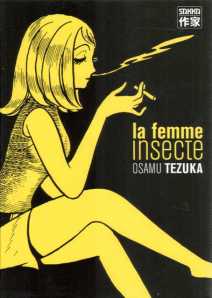 I’ll confess that I wasn’t familiar with the work of Julietta Suzuki before the announcement of the current Manga Moveable Feast. My mixed history with aspirational robotic fiction didn’t make Karakuri Odette an insta-buy, and my standoffishness towards reedy boys with more than one set of ears, while not yet the stuff of legend, is at least strong enough to make me look askance at Kamisama Kiss (Viz). But I do like what I’ve read of Karakuri Odette, and reliable sources have reassured me that Kamisama Kiss is a pleasant diversion.
I’ll confess that I wasn’t familiar with the work of Julietta Suzuki before the announcement of the current Manga Moveable Feast. My mixed history with aspirational robotic fiction didn’t make Karakuri Odette an insta-buy, and my standoffishness towards reedy boys with more than one set of ears, while not yet the stuff of legend, is at least strong enough to make me look askance at Kamisama Kiss (Viz). But I do like what I’ve read of Karakuri Odette, and reliable sources have reassured me that Kamisama Kiss is a pleasant diversion.
As is the way of things (with me, at least), I’m disproportionately excited about a Suzuki series that has yet to be licensed. This is because Erica (Okazu) Friedman mentioned that her wife is very fond of Suzuki’s Akuma to Dolce. I’ve never had the pleasure of meeting Erica’s wife, but I’ve divined the fact that our tastes in shôjo are eerily similar. (Never underestimate the bond formed by a shared love for V.B. Rose.) Add to this the fact that I really like comics about people who bake, and my anticipation becomes more pronounced.
 It’s apparently about a girl with an aptitude for both magic and cooking. She inadvertently summons a powerful demon who, conveniently enough, will do just about anything for a sweet treat. From there, I would imagine that standard but charming, slightly idiosyncratic shôjo antics ensue. And this is sometimes all I require from a series.
It’s apparently about a girl with an aptitude for both magic and cooking. She inadvertently summons a powerful demon who, conveniently enough, will do just about anything for a sweet treat. From there, I would imagine that standard but charming, slightly idiosyncratic shôjo antics ensue. And this is sometimes all I require from a series.
Akuma to Dolce is currently running in Hakusensha’s The Hana to Yume, which is not to be confused with Hana to Yume, the magazine home to all of her major works to date. There are two volumes available thus far.
Speaking of yet-to-be-licensed manga about people who make dessert, Alexander (Manga Widget) Hoffman conducts a thorough investigation of Setona Mizushiro’s Un Chocolatier de l’Amour Perdu, which was recently nominated for a Manga Taisho Award.




























